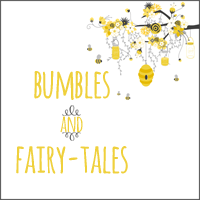We asked the authors to interview each other about their collaboration on IF PICASSO PAINTED A SNOWMAN (with a few suggested questions of our own), and we are so happy that they were able to play along with our idea and join us on the blog today!
by Amy and Greg Newbold
Release date: October 3rd, 2017
Published by: Tilbury House Publishers
Genre: Children's Picture Book
Format: Hardcover, eBook
Format read: Hardcover from the author's publicity rep.
SUMMARY
If someone asked you to paint a snowman, you would probably start with three white circles stacked one upon another. Then you would add black dots for eyes, an orange triangle for a nose, and a black dotted smile. But if Picasso painted a snowman...
From that simple premise flows this delightful, whimsical, educational picture book that shows how the artist's imagination can summon magic from a prosaic subject. Greg Newbold's chameleon-like artistry shows us Roy Lichtenstein's snow hero saving the day, Georgia O'Keefe's snowman blooming in the desert, Claude Monet's snowmen among haystacks, Grant Wood's American Gothic snowman, Jackson Pollock's snowman in ten thousand splats, Salvador Dali's snowmen dripping like melty cheese, and Georges Seurat, Pablita Velarde, Piet Mondrian, Sonia Delaunay, Jacob Lawrence, and Vincent van Gogh.
Our guide for this tour is a lively hamster who - also chameleon-like - sports a Dali mustache on one spread, a Van Gogh ear bandage on the next.
"What would your snowman look like?" the book asks and then offers a page with a picture frame for a child to fill in. Backmatter thumbnail biographies of the artists complete this highly original tour of the creative imagination that will delight adults as well as children.
INTERVIEWS
Questions for AMY from GREG:
1) WHAT WAS THE COLLABORATIVE PROCESS LIKE? WHAT WAS IT LIKE TO WORK SO CLOSELY WITH YOUR HUSBAND?
I have wanted to published picture books with Greg for a long time. When the opportunity came to publish "If Picasso Painted a Snowman" with Tilbury House, we jumped at the chance. Working together was really fun. We go to lunch sometimes and work on book manuscripts and brainstorm ideas, and we did that several times working on this book. When I began writing this book, I had several artists in mind that I knew I wanted to include. I discussed options with Greg, and he introduced me to some other amazing artists that ended up being in the book. I could talk to Greg about changes in the manuscript, and he could ask me for feedback on the paintings he created. It was great to know the illustrator and have an insider's view of his creative process. I had confidence in Greg's ability to do a project like this. He is a very talented artist, and I really enjoyed watching him research each artist and create paintings in their style. We had an entertaining afternoon while he splattered paint like Jackson Pollock in the backyard and I took pictures. Sometimes I had a vision in my head of what the snowman would look like, and then I would see Greg's painting and has always exceeded my expectations. Most authors don't get to meet their illustrators, so I feel really lucky to work with Greg.
2) WHICH ARTIST DID YOU LIKE LEARNING ABOUT THE MOST?
That's a tough one! I found the more I learned about these artists, the more I liked them. Some of them I knew quite a bit about before I did this book so I would have to say the one I loved learning about the most for this project was Pablita Velarde. She was not only an amazing artist but a strong woman who was not afraid to pursue her vision.
3) WHAT SURPRISED OR DELIGHTED YOU THE MOST ABOUT THINGS YOU LEARNED?
I found it really interesting that the artists had so much in common, and that they often inspired each other. I loved finding connections between the artists represented in the book. For example, after Monet saw J.M.W. Turner's work, he went on to be one of the originators of Impressionism. There were quite a few connections like that. One thing that surprised me was Georges Seurat didn't live very long. I wonder what else he could have created if he'd had more time. Researching all these artists made me want to start drawing and painting again.
4) WRITING IS LIKE DRAWING WITH WORDS. WHICH SNOWMAN WAS THE MOST FUN TO WRITE?
I think my favorite lines in the book were the ones that came early in the writing process. I knew I wanted certain artists in the book right from the beginning, and I think the reason I wanted them as I already knew what I would write about them. My favorite lines are the ones for Dali, Seurat, Mondrian, and Pollack. I could hear those in my head right from the beginning - "Jackson Pollack painted his snowman splish, splash, splat!" for example. And I knew Dali's snowmen would drip like melty cheese.
5) HOW LONG DID IT TAKE YOU TO WRITE THIS BOOK?
The original draft was written in less than a year. I began writing the book when I visited the Musee Picasso in Paris, France in 2008. I was on a trip with my sisters, and I said "I wonder what it would look like if Picasso painted a snowman," and my sister told me that would be a great picture book. I saw so many wonderful artists in Paris, I began thinking immediately about people I would include in a book. That's when it all began. In 2009, I took a completed manuscript to a weeklong writing conference and participated in a picture book workshop. My book got good feedback at the conference, so Greg and I started marketing it to publishers and literary agents. It took some time before we found a home with Tilbury House Publishers. With Tilbury, I was able to expand the book to include three more artists, so that involved additional writing. From the first draft to publication was about nine years.
6) WHAT ADVICE WOULD YOU GIVE TO ASPIRING WRITERS?
Read. Read all kind of books. Pay attention to what you do or don't like about a book. When you are writing, don't worry too much about it because the great part about writing is that you can re-write things and make them better. Read your writing out loud. Sometimes when you read out loud, you find out a sentence doesn't flow, or that what you have written is awkward, and that gives you the chance to fix it. But the most important thing to do when writing is to have fun. Writing is a great way to create and to learn more about yourself.
Questions for GREG from AMY:
1) WHEN DID YOU KNOW YOU WANTED TO BE AN ARTIST? HOW DID YOU LEARN TO DRAW AND PAINT?
Some of my earliest memories were of drawing and painting. I used to copy my favorite pictures from Dr. Seuss and superhero comics. My Dad was in advertising and sometimes would bring the end rolls home from his visits to the newspaper press. We would roll them out on the unfinished basement floor an draw epic murals. In junior high, I sold my first painting for fifty dollars and I think that was when I knew I was pretty good at this art thing. By the end of high school, I had decided that making art was the path I wanted to pursue. I had always loved illustration art, from Norman Rockwell to fantasy artists like the Brothers Hildebrandt, making my college major an easy choice. Once in college, I had the legitimate option of creating n old master copy painting instead of writing a paper. My professor told me my Van Gogh was the best copy she had ever seen because I tied so hard to get the materials and surface texture correct. I still enjoy learning and trying to make my art better. Trying to paint in the style of the seventeen different artists included in If Picasso Painted a Snowman was a very rewarding challenge. I learned so much and became a better artist as a result.
2) THE HAMSTER IN "IF PICASSO PAINTED A SNOWMAN" IS NOT IN THE TEXT. WHY DID YOU CREATE THE CHARACTER FOR THE BOOK?
I felt that there needed to be a visual guide to carry the reader through the book. I designed the hamster after our daughter's pet hamster, Max. He is not named or mentioned in the text but he helps out with a number of visual gags throughout the book. He wears Monet's beret, Dali's mustache, Picasso's striped shirt, and Van Gogh's ear bandage. His paw prints are on the Pollock page, and he uses a compass and other art implements on other pages of the book. His role is purely visual and adds another dimension to our book. It has been fun to see how many adults get the sight gags on various pages as they look at the hamster.
3) DO YOU HAVE A FAVORITE PAINTING FROM THE BOOK? IF SO, WHICH ONE(S)?
That's like ski which of your children do you love the most. I love them all for different reasons. Some paintings were more fun than others, some were harder than others and I learned more than I expected from a few. I think I like the spoof paintings the best because it's so hard to make an effective parody of a well-known painting. Take Grant Wood's American Gothic for example, which everyone has seen a million times. This makes whatever I do funnier because people recognize the painting right away and feel like they are in on the joke. I also really like my version of Gustav Klimt's snowman with all its patterns. It was fun to work with the gold leaf that Klimt was famous for. it doesn't translate to print as well as it looks in real life, but you can still tell it is there.
4) WHAT WAS IT LIKE FOR YOU CREATING THIS BOOK?
This project was so much fun that it often felt like playing rather than work. Before beginning a piece, I researched the artist's style, the materials, and techniques that they used and what motifs and design quirks made them unique. Each piece was a treat to work on and for the most part, I feel that I captured some of the essences of what each artist was known for. I learned many new processes but probably the most fun I had was imitating Jackson Pollock's drip style "action painting". Some people look at Pollock's work and assume that they could do it since all you have to do is splatter paint around. After more study, I realized that Pollock's work is far from random and unplanned. There is an interesting rhythm and process in the way he layered paint. I had a great afternoon in the backyard dancing around my canvas laid on the ground deciding where the next splash of paint would look the best and trying to put it there. My Pollock turned out pretty well and was using as endpapers of the book. I was so entertained by the process that I want to do it again.
5) WHY ISN'T YOUR OWN SNOWMAN IN THE BOOK?
Actually, they are ALL my snowmen. I dug deep to learn what makes each chosen artist unique and did my best to emulate their styles, but in the end, there is quite a bit of my own style in each painting. When you create, it's impossible to separate your own habits, skills, and experiences from what you are putting down on the canvas. A bit of your soul seeps out and becomes part of your art.
6) WHAT ADVICE WOULD YOU GIVE TO YOUNG ARTISTS?
I would tell young artists that there is no right or wrong way to create art, simple techniques that either allow or prevent you from achieving the vision you have for your art. To me, the most important building block to becoming an artist is drawing. you must learn to draw accurately before you can learn to draw stylistically. Once you can draw whatever you see, you can decide how to change what you see and draw it differently. Build your skills be learning different mediums and techniques to build your skills. These skills are your "tools". When you have a toolbox full of tools you have the freedom to create whatever you want. Look at everything, but learn to really see. The snowman at the beginning of the book is merely the popular symbol for snowmen, not what they do or even could look like. Hopefully, "If Picasso Painted a Snowman" Shows that the possibilities are endless when creating art and that you should not be intimidated or limited by what some people perceive as "rules".
ABOUT THE AUTHOR - Amy Newbold
Amy Newbold grew up drawing horses.
While visiting the Musee Picasso in Paris, she wondered what a snowman painted by Picasso would look like.
Although she once fell asleep in an art history class, she has always loved art, museums, and museum gift shops.
Before writing this book, Amy would have drawn a snowman by stacking three white circles one upon another, but now she is planning to paint a snowman made of dots.
Amy loves road trips with her husband Greg, writing, and hiking and camping in the mountains near her home.
ABOUT THE ILLUSTRATOR - Greg Newbold
Award-winning illustrator Greg Newbold grew up drawing superheroes and Dr. Seuss characters on giant end rolls of newsprint in his childhood basement. He once copied a Vincent van Gogh painting for a college art history class instead of writing a paper.
Greg found it challenging and fun to paint in the styles of so many of his favorite artists for this book.
He loves his job of making pictures and has illustrated a dozen books for children.
In his free time, Greg enjoys gardening, fishing, road trips with Amy, and painting the natural wonders near his Utah home.






























No comments:
Post a Comment
Thank you so much for stopping by and leaving a comment today!
If you are asking a question and you are a no-reply commenter,
please email me directly at thebumblegirl at rocketmail dot com or leave your email in the comments...
Thank you! and, as always, happy reading :)